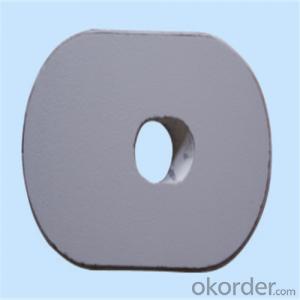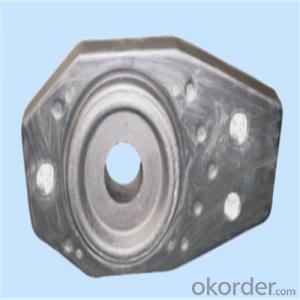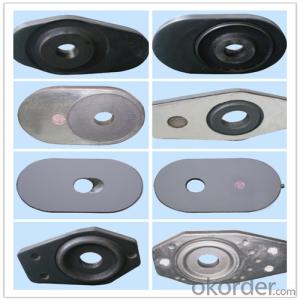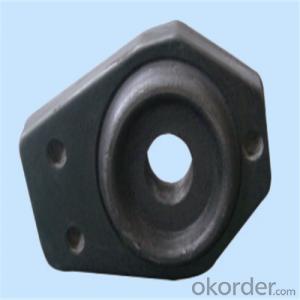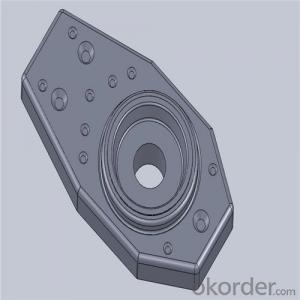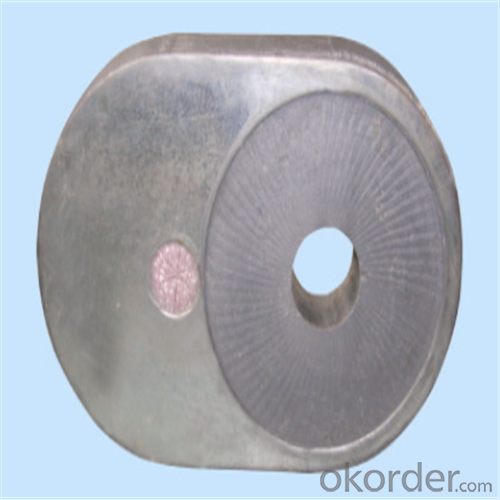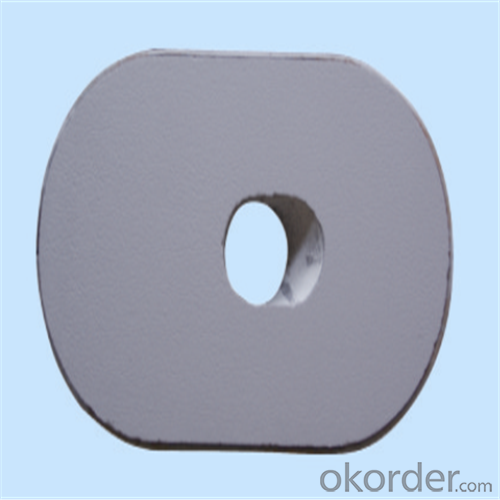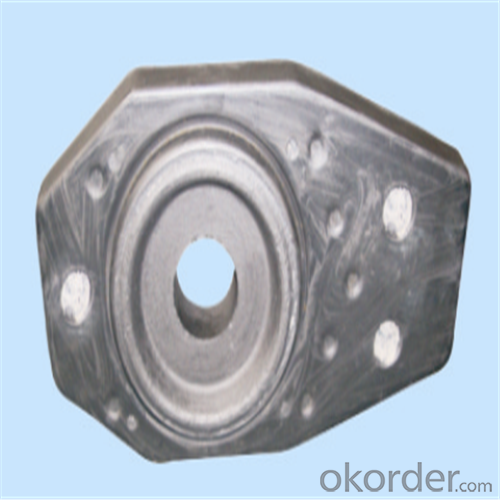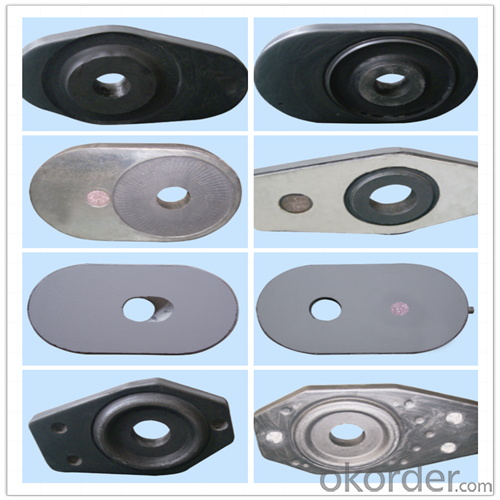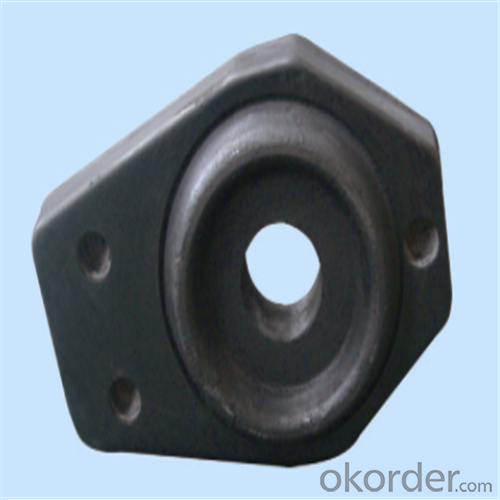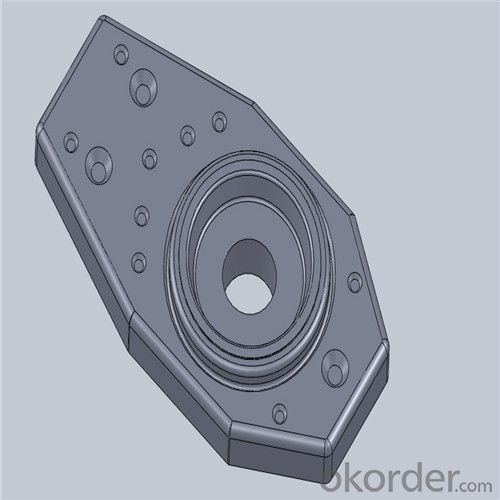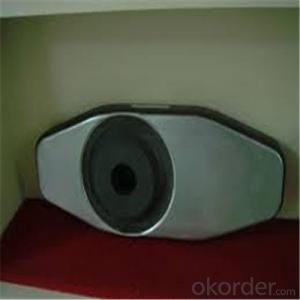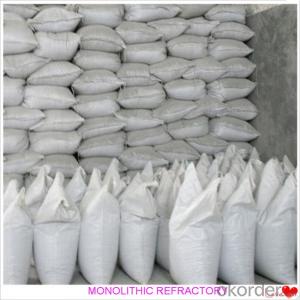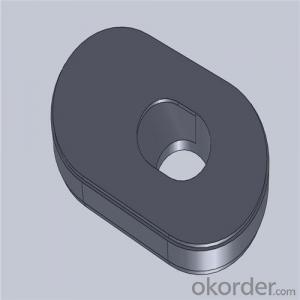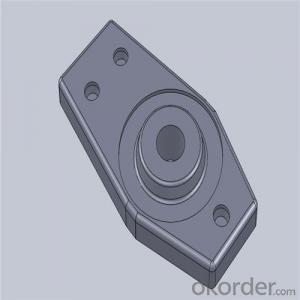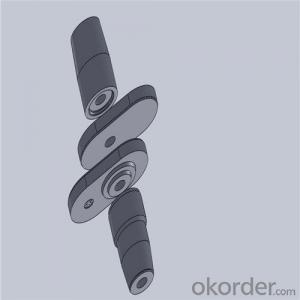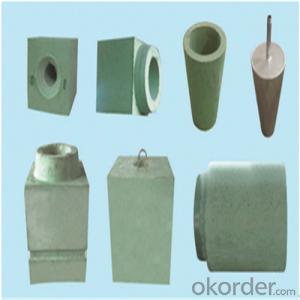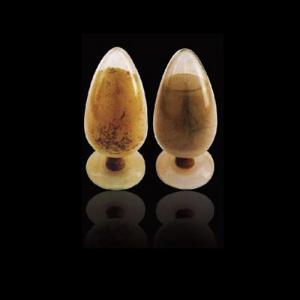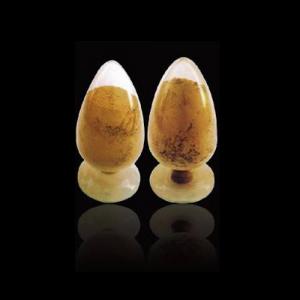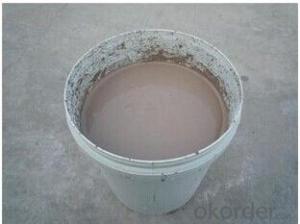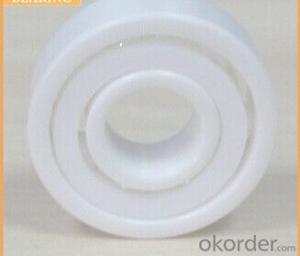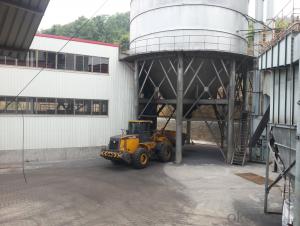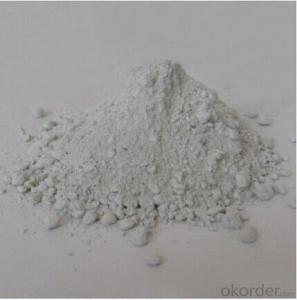Monolithic Refractories High Performance Ladle Slide Gate for Iron and Steel Industry
- Loading Port:
- Shanghai
- Payment Terms:
- TT OR LC
- Min Order Qty:
- 100 pc
- Supply Capability:
- 1000 pc/month
OKorder Service Pledge
OKorder Financial Service
You Might Also Like
Quick Details for High Performance Refractory Ladle Slide Gate
| Place of Origin: | China (Mainland) | Shape: | Plate | Material: | Alumina Block |
| SiO2 Content (%): | N/A | Al2O3 Content (%): | 80-90% | MgO Content (%): | N/A |
| CaO Content (%): | N/A | Refractoriness (Degree): | 1770°< Refractoriness< 2000° | CrO Content (%): | N/A |
| SiC Content (%): | N/A | Model Number: | CS80 | Brand Name: | |
| Product name: | High performance refractory ladle slide gate | Model No.: | cs80 | Brand name: | CMAX |
| Quality: | Al-C or Al-Zr-C | Service life: | 4-6 heats | Apparent porosity: | 7% Max |
| Bulk density:: | 3.1 MIN | C.C.S: | 120MPA | MOQ: | 100 pcs for trial |
| Delivery time: | 60 working days upon receipt of deposit |
Packaging & Delivery
| Packaging Details: | Inner carton packing, outer wooden case suitable for long term sea shipping |
| Delivery Detail: | three months working days upon receipt of deposit |
Specifications
Surface flatness less than 0.05mm
High mechanical strength
Erosion resistance
Oxidation resistance
Thermal shock stability
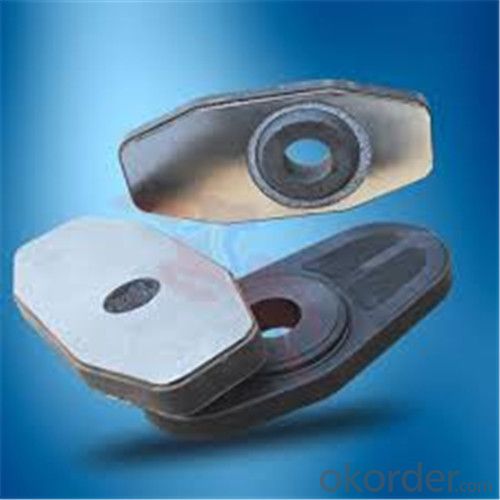
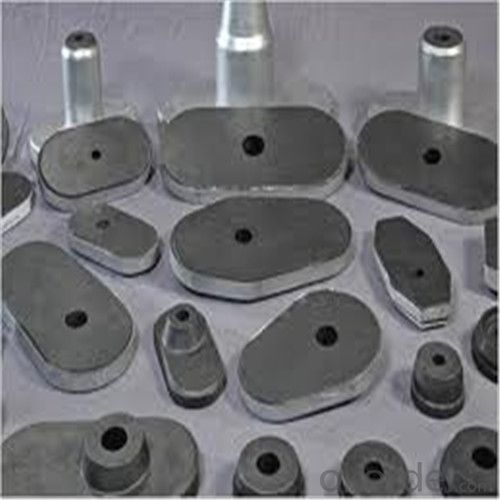
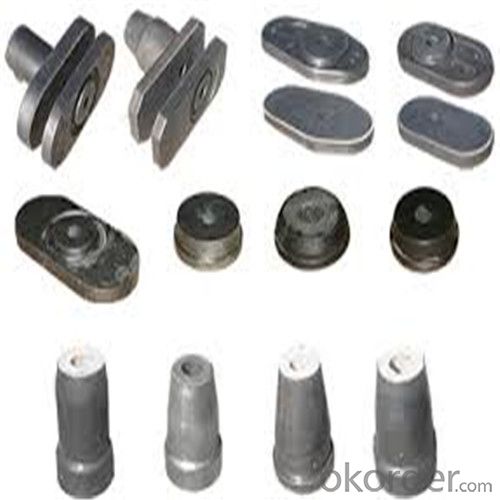
General Chemical Analysis for refractory ladle slide gate :
slide gate plate widely including Alumina carbon and Alumina Zirconia Carbon slide gate plate, MgO and MgO-spinel slide gate plate,nonoxides bonding slide gate plateand unburned slide gate plate.
Alumina -Zirconia-Carbon material
| Al-Zr-C Material | |||||
| Al2O3 | C | ZrO2 | Apparent porosity | Bulk density | C.C.S |
| (% minm) | (% minm) | (% minm) | (% max) | (gm./cc minm) | (MPa minm) |
| 85 | 3 | 5 | 7 | 3.1 | 120 |
| 85 | 3 | 4 | 7 | 3.1 | 120 |
Composite type: Al-Zr-C for working line, outer Al-C material
| Al-Zr-C & Al-C Material | ||||||
| Al2O3 | C | ZrO2 | Apparent porosity | Bulk density | C.C.S | |
| (% minm) | (% minm) | (% minm) | (% max) | (gm./cc minm) | (MPa minm) | |
| Inner side (Working face) | 85 | 3 | 4 | 7 | 3.1 | 120 |
| Outside | 90 | 3 | 0 | 9 | 3 | |
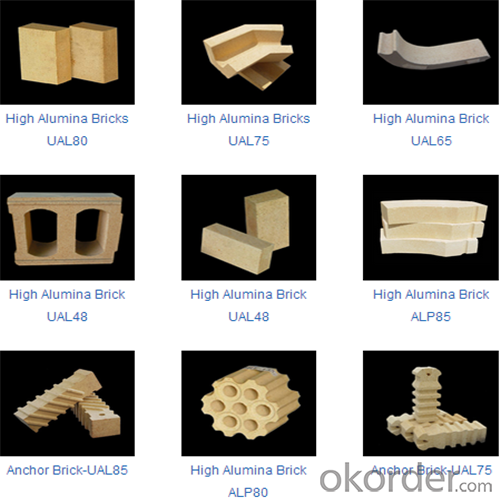
About us
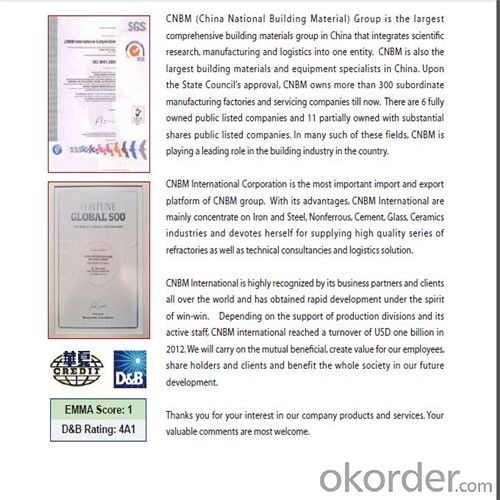
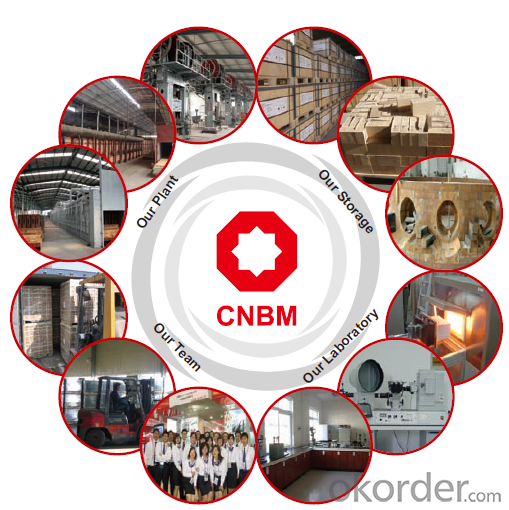
Sample is on your request.
Welcome to visit our factory~
- Q: How do monolithic refractories improve the lining of converters and refining vessels?
- Improving the lining of converters and refining vessels is a crucial role played by monolithic refractories in several ways. To begin with, these refractories offer exceptional thermal insulation properties, which effectively maintain the desired temperature within the converters and refining vessels. This is particularly important as the metallurgical processes require high temperatures to be effective. Furthermore, the high chemical resistance of monolithic refractories is vital in the harsh conditions of converters and refining vessels. These vessels often come into contact with corrosive materials and aggressive slags, but the monolithic refractories prevent any deterioration or erosion of the lining caused by these substances. In addition, the mechanical strength and stability provided by monolithic refractories ensure that the lining remains intact even under high operational stresses. This is especially significant in converters and refining vessels where frequent mechanical movements and thermal expansions occur. Moreover, monolithic refractories offer easy installation and repair compared to traditional bricks, which require complex and time-consuming assembling. Monolithic refractories can be applied as a single mass, minimizing downtime during installation or repair. This results in time and cost savings for maintaining the lining of converters and refining vessels. Overall, the utilization of monolithic refractories significantly enhances the performance and longevity of converters and refining vessels. Their excellent thermal insulation, chemical resistance, mechanical strength, and ease of installation and repair guarantee efficient and reliable operation in metallurgical processes.
- Q: How do monolithic refractories improve the efficiency of ladle and tundish preheating stations?
- Monolithic refractories improve the efficiency of ladle and tundish preheating stations by providing excellent insulation properties and high thermal conductivity. This allows for better heat retention and transfer, resulting in faster and more efficient preheating of ladles and tundishes. Additionally, monolithic refractories offer improved resistance to thermal shocks and erosions, leading to longer service life and reduced downtime for maintenance and replacement.
- Q: How do monolithic refractories resist high temperatures?
- Monolithic refractories, with their unique composition and structure, are specifically designed to withstand high temperatures. Unlike traditional refractory bricks, which are made up of multiple pieces, these refractories are created from a single material or piece. The primary factor contributing to the high temperature resistance of monolithic refractories is their elevated melting point. Materials such as alumina, silica, and magnesia, which have melting points ranging from 1650°C to 2000°C, are utilized in their production. This characteristic allows the refractories to endure extreme temperatures without experiencing significant deformation or melting. Moreover, monolithic refractories possess exceptional thermal stability. They exhibit low thermal conductivity, enabling them to effectively insulate against heat transfer. As a result, these refractories can maintain their structural integrity even when exposed to rapid temperature changes or thermal shocks. Furthermore, the monolithic nature of these refractories grants them enhanced resistance to thermal stress. Unlike traditional refractory bricks, they lack joints or seams that are susceptible to thermal expansion and contraction. Consequently, they exhibit greater resistance to cracking or spalling when subjected to high temperatures. Additionally, monolithic refractories have the ability to develop a protective layer or slag on their surface when exposed to elevated temperatures. This slag acts as a barrier, preventing direct contact between the refractory material and the hot gases or molten metals. Consequently, the risk of chemical reactions or corrosion is reduced. In conclusion, the combination of high melting point, thermal stability, resistance to thermal stress, and the capacity to form a protective slag makes monolithic refractories highly effective in withstanding high temperatures. They find wide applications in various industries, including steel, cement, glass, and petrochemical, where they encounter extreme heat conditions.
- Q: How do monolithic refractories contribute to the efficiency of iron and steel production?
- Monolithic refractories play a crucial role in enhancing the efficiency of iron and steel production processes. These refractories are known for their superior thermal properties, high resistance to mechanical stress, and excellent resistance to chemical corrosion. One key way that monolithic refractories contribute to the efficiency of iron and steel production is by providing effective insulation. By lining the walls of furnaces and other high-temperature equipment, monolithic refractories prevent heat loss and ensure that the desired temperatures are maintained consistently. This insulation helps to reduce energy consumption, as less heat is wasted, ultimately leading to cost savings. Additionally, monolithic refractories offer excellent thermal shock resistance. In the iron and steel industry, frequent heating and cooling cycles are common, and traditional refractory materials may crack or fail under these conditions. However, monolithic refractories can withstand rapid temperature changes without failure, ensuring the longevity and reliability of the refractory lining. This resistance to thermal shock reduces downtime for repairs and maintenance, thereby increasing the overall efficiency of the production process. Moreover, monolithic refractories have strong resistance to chemical corrosion. In iron and steel production, various corrosive substances are present, including molten metal, slag, and gases. The use of monolithic refractories as lining materials helps to protect the underlying structures from chemical attack, preventing erosion and extending the service life of the equipment. This resistance to corrosion reduces the need for frequent repairs or replacements, leading to cost savings and increased productivity. Furthermore, monolithic refractories offer easy installation and repair. Unlike traditional refractories, which are often built brick by brick, monolithic refractories are applied as a single mass. This allows for faster installation and reduces the potential for weak points or joints that might compromise the overall efficiency of the refractory lining. Additionally, when repairs or maintenance are required, monolithic refractories can be easily patched or replaced, minimizing downtime and ensuring smooth operation. In summary, the use of monolithic refractories in iron and steel production contributes to increased efficiency in several ways. Their excellent thermal insulation properties reduce energy consumption, while their resistance to thermal shock and chemical corrosion ensures reliable and long-lasting refractory linings. Additionally, their easy installation and repair capabilities further enhance productivity. Overall, monolithic refractories are a vital component in improving the efficiency and sustainability of iron and steel production processes.
- Q: How do monolithic refractories withstand the mechanical impacts in furnace door applications?
- Monolithic refractories withstand mechanical impacts in furnace door applications due to their high strength and resistance to thermal shock. These refractories are composed of dense and uniform materials, such as castables or plastics, which provide excellent structural integrity and the ability to withstand heavy loads and vibrations. Additionally, they have low porosity and high thermal conductivity, allowing them to dissipate heat efficiently and reduce the risk of cracking or spalling under mechanical stress.
- Q: How do monolithic refractories improve the thermal efficiency of iron and steel furnaces?
- Monolithic refractories play a crucial role in improving the thermal efficiency of iron and steel furnaces. These refractories are essentially a single, solid mass that is used to line the furnaces and provide insulation and protection against the extreme temperatures generated during the metal production process. One way in which monolithic refractories enhance thermal efficiency is by reducing heat loss. These materials have low thermal conductivity, meaning they are poor conductors of heat. By lining the furnace with monolithic refractories, the heat generated inside the furnace is effectively contained within the chamber, minimizing heat loss to the surrounding environment. This allows for more efficient use of energy, as less heat is wasted and more of it is utilized for the intended purpose of heating and melting the metal. Additionally, monolithic refractories also contribute to the overall efficiency of the iron and steel furnaces by providing a high level of heat resistance. The extreme temperatures reached inside these furnaces can easily damage or deteriorate conventional refractory materials. However, monolithic refractories are designed to withstand these harsh conditions, maintaining their integrity and performance over extended periods. This durability ensures that the lining remains intact, preventing any potential leakage of heat and ensuring that the furnace operates at maximum efficiency. Furthermore, monolithic refractories offer flexibility in their installation process. They can be easily shaped and molded to fit the intricate designs and contours of the furnace, creating a seamless and continuous lining. This eliminates any gaps or weak points that could allow heat to escape or cold air to enter, further enhancing the thermal efficiency of the furnace. Overall, monolithic refractories significantly contribute to the thermal efficiency of iron and steel furnaces by reducing heat loss, providing high heat resistance, and ensuring a tight and continuous lining. By optimizing heat utilization and minimizing energy wastage, these refractories play a vital role in improving the productivity and sustainability of the iron and steel industry.
- Q: How do monolithic refractories resist chemical attack from molten metals and slags?
- Monolithic refractories are designed to resist chemical attack from molten metals and slags through a combination of factors. Firstly, monolithic refractories are typically made from high-quality materials that have excellent chemical resistance properties. These materials, such as alumina, magnesia, or silica, have a stable chemical structure that can withstand the corrosive nature of molten metals and slags. Secondly, monolithic refractories are often formulated with additives or binders that enhance their resistance to chemical attack. These additives can improve the refractory's ability to form a protective layer on its surface, which acts as a barrier between the refractory material and the corrosive molten metal or slag. Additionally, monolithic refractories are often designed with a dense microstructure that limits the penetration of molten metals and slags. The dense structure minimizes the pathways through which corrosive agents can reach the refractory material, reducing the risk of chemical attack. Moreover, monolithic refractories can be installed with proper joint design and anchoring systems to prevent the infiltration of corrosive substances. This ensures that the refractory lining remains intact and effectively resists chemical attack. Overall, the combination of high-quality materials, additives, dense microstructure, and proper installation techniques contribute to the ability of monolithic refractories to resist chemical attack from molten metals and slags, thereby extending their lifespan and maintaining the integrity of the refractory lining in high-temperature applications.
- Q: What are the main factors affecting the abrasion resistance of monolithic refractories?
- The main factors affecting the abrasion resistance of monolithic refractories are the composition of the refractory material, the size and shape of the abrasive particles, the velocity and angle of impact of the abrasives, and the temperature and pressure conditions in the application environment.
- Q: How do monolithic refractories provide thermal insulation in the iron and steel industry?
- Monolithic refractories play a crucial role in providing thermal insulation in the iron and steel industry. These refractories are commonly used to line the furnaces and other high-temperature equipment used in the production processes. One way monolithic refractories provide thermal insulation is by their ability to withstand high temperatures without degrading or melting. They are designed to have high heat resistance, which allows them to be used in environments where temperatures can reach several thousand degrees Celsius. By withstanding these extreme temperatures, the refractories prevent the transfer of heat to the surrounding structure, thus providing insulation. Another way monolithic refractories provide thermal insulation is through their low thermal conductivity. These materials have a low thermal conductivity, meaning they are not efficient in conducting heat. Instead, they trap the heat within their structure and minimize its transfer to the surrounding equipment or environment. This characteristic helps to maintain the temperature inside the furnaces and other high-temperature equipment, allowing for efficient and controlled metal production. Furthermore, monolithic refractories can be applied as a thick lining layer, which creates an additional barrier between the high-temperature environment and the surrounding equipment. The thickness of the refractory lining helps to minimize heat transfer and acts as a buffer, reducing the impact of high temperatures on the structural integrity of the equipment. In addition to providing thermal insulation, monolithic refractories also offer excellent resistance to chemical attack and mechanical wear, which are common challenges in the iron and steel industry. This resistance ensures the longevity of the refractory lining, allowing for consistent and reliable insulation over time. Overall, monolithic refractories provide thermal insulation in the iron and steel industry through their high-temperature resistance, low thermal conductivity, thick lining layer, and resistance to chemical attack and mechanical wear. These properties contribute to maintaining the desired temperature inside the equipment and protecting the surrounding structure from the intense heat generated during metal production processes.
- Q: What are the specific requirements of monolithic refractories for ladle transfer applications?
- Monolithic refractories for ladle transfer applications need to have high thermal shock resistance, excellent corrosion resistance, and good thermal conductivity. They should also have low porosity to prevent molten metal penetration and maintain their structural integrity. Additionally, these refractories should possess good erosion resistance and be able to withstand the mechanical stresses of ladle transfer operations.
Send your message to us
Monolithic Refractories High Performance Ladle Slide Gate for Iron and Steel Industry
- Loading Port:
- Shanghai
- Payment Terms:
- TT OR LC
- Min Order Qty:
- 100 pc
- Supply Capability:
- 1000 pc/month
OKorder Service Pledge
OKorder Financial Service
Similar products
Hot products
Hot Searches
Related keywords

